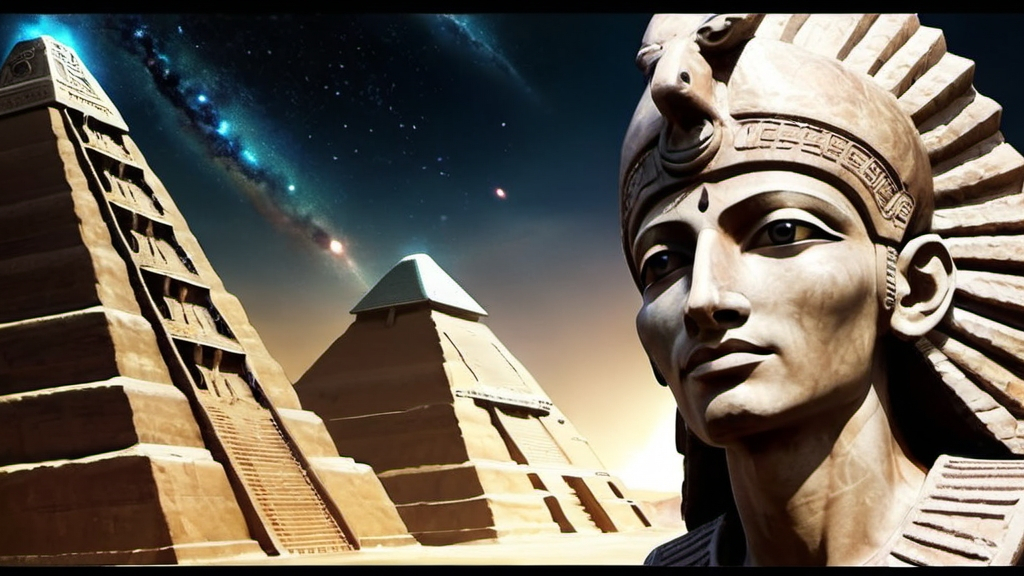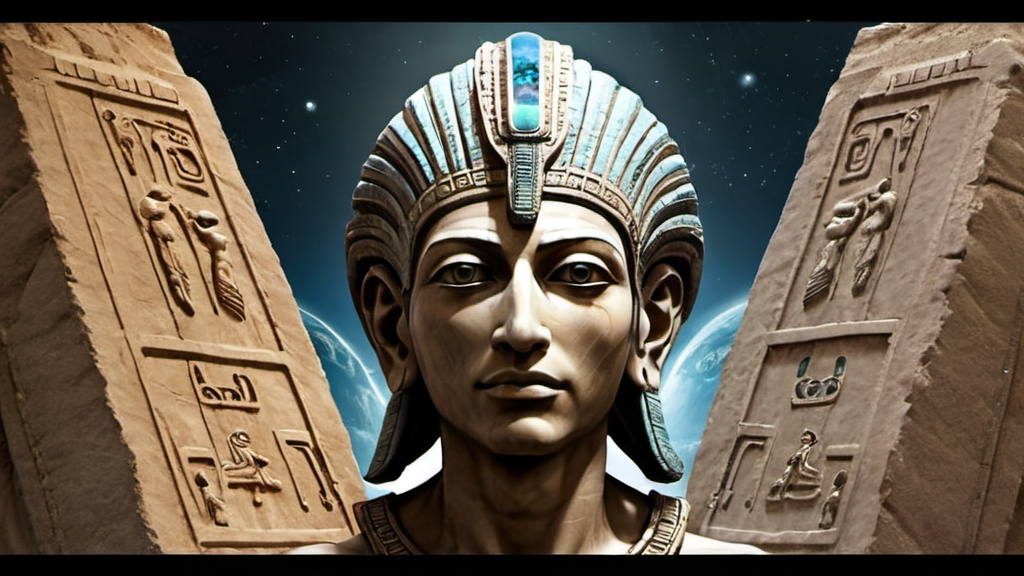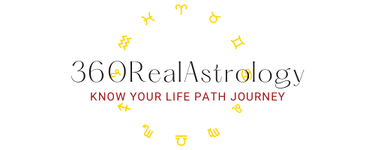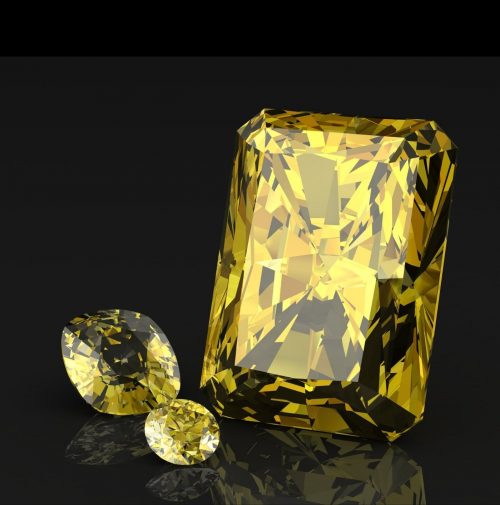Here are seven intriguing facts about the Anunnaki.

1. Introduction
The Anunnaki are a group of deities in ancient Mesopotamian cultures. The name is variously written “da-nuna”, “da-nuna-ke4-ne”, or “da-nun-na”, meaning something to the effect of “those of royal blood” or ‘princely offspring’ in the earliest texts.
Their relation to the group of gods known as the Igigi is unclear – at times the names are used synonymously but in the Atra-Hasis epic the Igigi are the sixth generation of the Gods who have to work for the Anunnaki, rebelling after 40 days and replaced by humans. In the earliest Sumerian writings about them, which come from the Post-Akkadian period, the Anunnaki are the most powerful deities in the pantheon, descendants of An, the god of the heavens, and their primary function is to decree the fates of humanity.
In Inanna’s Descent into the Underworld, her role in decreasing Ereshkigal’s fate (with the blessing of Enki) shows the Anunnaki as the ultimate decision makers. This is an interesting contradiction, however, when one first looks at the etymology of the word, as it contrasts with the idea of the Anunnaki as the offspring of the younger gods, the Igigi.
2. The History of the Anunnaki
However, the older gods quickly became jealous of their creation. After an incident which ended with one of them having to forfeit his life, it was decided that humans would not be given the ‘me’, the essence of divine power and understanding. This left humans to be both the rivals of the gods and somewhat of a disappointment to them, as without this understanding they would be reliant on the gods for guidance.
The history of the Anunnaki is derived from both Sumerian and Akkadian texts. The Enuma Elish, the Babylonian epic of creation which is derived from the Sumerian records, tells the story of how the younger gods, the children of Anu, were being oppressed by the elder gods, the Anunnaki. The solution agreed was to mix the blood of a god and one of clay/genetic engineering to create humans to act as their slave workers.
This was brought into effect when Nibiru next came into the solar system and the descriptions of the act of creation seem to echo what, in the author’s opinion, would be a cloning process with a more advanced understanding of genetics. The first few specimens were created via a process not unlike IVF and then implanted in the womb of Ninhursag, the mother of the gods.

3. The Influence of the Anunnaki on Ancient Civilizations
These translations of ancient texts have caused great controversy among certain groups of people and scholars. Some have taken the theory that it is all the same story, and the ancient Sumerian text of the creation of man is what is actually documented in the Bible. Although this concept is still considered to be a myth by most, it has set off a wave of heated debate and research into both tales.
People who speak Hebrew and know that Elohim is, in fact, the plural term for Gods, which is why most translate Genesis 1:26 to “Let us make man in our own image after our likeness.” It is also worth considering the similarities in the following creation of man in these two stories.
Another interesting point to note is how similar the ancient creation story of the Anunnaki is to the present day Christian creation theory. In the Old Testament in the book of Genesis, it is written how Elohim said, “Let us make man in our image as likeness and to let them rule over the fish of the sea and the fowl of the air, and over the cattle, and all the Earth and every creeping thing.” Now the word Elohim in the Bible has been mistakenly considered as being the name for God.
The Anunnaki were seen as a hindrance to mankind in many stories. According to some accounts, they were given the task of helping man to prosper, teaching them the ways of the heavens and the Earth. These writings paint a picture of helpless creatures, being manipulated by higher beings for their own selfish desires. Other tales depict a slightly more positive picture, describing how humans were created as a slave race to the Anunnaki.
This was a response to the rebelling of the Lesser Gods, and the being created to allow the Anunnaki to take life a little easier. This concept is outlined in the ancient mythological story of Adapa which tells how one of the Anunnaki tried to give the gift of immortality to one of his human creations, but it was revoked by the high God Anu, so as to prevent mankind from becoming equal in stature to the Anunnaki.
4. Modern Interpretations and Controversies Surrounding the Anunnaki
Annunaki is a concept that was accepted wholeheartedly before big discovery and translations were done, was overlooked and then later overturned due to increasing understanding of historical inscriptions and learned studies on ancient Middle Eastern cultures. The Anunnaki, especially as developed by Zecharia Sitchin, are by no means irrelevant.
The Anunnaki are considered one of the many great mysteries of history and many people are interested in theories as to the real nature of the Anunnaki and whether they are still among us in some form today. Obviously, the work of Zecharia Sitchin is the most well-known and widely disseminated work concerning the Anunnaki, and for many people, Sitchin’s version of the Anunnaki is the only version they know.
While many people do not consider Sitchin’s work as historical fact, some consider it to be the best interpretation of the original ancient texts and have used it as the basis for work in a wide variety of fields. Whether you agree or disagree with the ancient astronaut theory and the work of Zecharia Sitchin, one must bear in mind that the Anunnaki are, in fact, part of the historical record and their true nature remains a mystery that scholars continue to debate.
References:
Icke, D. “The biggest secret.” 2023. ignaciodarnaude.com
Jarrell, J. “Anunnaki Revealed: Who Were These Beings of Ancient Astronaut Theory?–Part I.” 2021. ancient-origins.net
Romney, N. “Sumerian Origins: Lifting the Veil on Ancient Mesopotamian Mysteries.” 2020. [HTML]
Jarrell, J. “Anunnaki Revealed: Who Were These Beings of Ancient Astronaut Theory?–Part I.” 2021. ancient-origins.net
Winters, Ryan. “Ancient Aliens, Modern Cosmologies.” Receptions of the Ancient Near East in Popular Culture and Beyond (2020): 237. [HTML]
Giannini, J. A. “Selected Mid-East Myths Provide Basis For Common Origin Myth Reconstruction.” 2021. jagnetbooks.org
Жиглов, В “Mistake of Gods.” 2023. [HTML]
Caddy, J. F. “Extrapolating Back in Time to our Off-Planet Ancestors.” Global Journal of Human-Social Science, 2020. gjhss.com
Agrò, Maurizio. “The Universe Born of Sound.” Music and Astronomy: From Pythagoras to Steven Spielberg. Cham: Springer Nature Switzerland, 2023. 3-11. [HTML]
Rayhan, A. “A Brief History of Humankind Exploring the Alien Hypothesis.” researchgate.net, . researchgate.net








Connect me